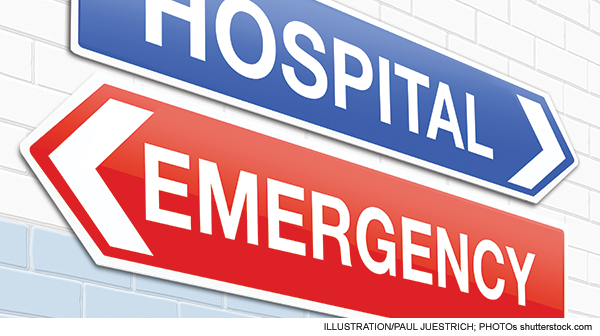
On a recent Friday, Pattie Malone, MD, worked the emergency room at Ocean Beach Hospital, a 25-bed, critical-access facility in Ilwaco, a small city in the extreme southwestern corner of Washington State. She admitted a patient, but once the patient was admitted, that wasn’t the end—their paths would cross again.
Explore This Issue
ACEP Now: Vol 33 – No 05 – May 2014When her regular ED shift was done, Dr. Malone, a doctor with EmCare, put on a second hat: She became Ocean Beach’s hospitalist, too, rounding on inpatients over the remainder of the weekend.
“It actually can enhance patient quality and safety because I am taking care of this person who I saw the day before, and so I build momentum,” Dr. Malone said. “I admitted the patient the day before, I knew the goals of admission, I know the criteria for discharge and what I’m looking for.”
Ranks of Hospitalists Growing
It’s becoming more and more common for emergency physicians to work simultaneously as hospitalists in the nation’s smallest hospitals—generally those with no more than 10,000 to 12,000 ED visits per year. It’s a subset of a trend toward a single company providing a hospital with both emergency physicians and hospitalists.
With so many hospitals already hiring contract management groups to staff their emergency departments and many also hiring companies for their hospitalists, the single-source model is an automatic progression for enterprising contract management groups when hospitals are looking extra hard for ways to streamline their operations and cut costs.
Another major factor is the shortage of hospitalists and the rising cost to a hospital of paying hospitalists, said Mark Hamm, CEO of EmCare Hospital Medicine. EmCare began as an emergency medicine company and branched into hospital medicine about five years ago.
“If you look at supply and demand, there’s not enough hospitalists—there’s about 50,000 hospital medicine opportunities for about 30,000 physicians,” he said. “What that’s doing is driving up the cost of hospital medicine.”
By handling both the hospitalist and emergency medicine services, EmCare said it could help hospitals save money by providing improved efficiencies. EmCare does work at 585 total facilities, providing emergency medicine at 477 of them. Of those, 115 use EmCare for both ED and hospitalist service. And 32 are “Complete Care” clients, who use single doctors as both emergency doctors and hospitalists. In 2012, EmCare had 126 client “starts,” with 34 using both EM and HM. In 2013, there were 187 starts, with 45 using both services.
Pages: 1 2 3 4 | Single Page





No Responses to “Emergency Physicians Increasingly Work Simultaneously as Hospitalists in Nation’s Smallest Hospitals”